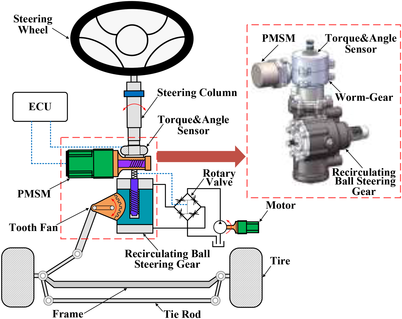EPAS systems work by using an array of sensors, control units and an electric motor. A torque sensor mounted to your car's steering column measures the amount of force you apply to the steering wheel. The torque sensor, along with vehicle speed and steering angle sensors, sends this information to a control module
Making the drive to and from work easier isn't the only benefit of modern EPAS systems. They also don't require a hydraulic pump to operate. Because the engine doesn't have to operate an auxiliary hydraulics system, EPAS systems are also slightly more efficient than their hydraulic counterparts. With ever-tighter fuel requirements, a more efficient system is a benefit to both drivers and automakers.
The biggest advantage to EPAS systems, however, is that they can be integrated into the advanced driver assist systems that are becoming more and more popular in modern cars. Because an electric motor is placed on the steering column, driving aids are able to intervene and make small corrections to the steering.
Signs a Steering Column is Failing
-
A bad steering column is to blame if you’re having difficulty turning your steering wheel. The lower shaft between the fixed column and the steering gear typically has two universal joints on a replaceable shaft. In the same way U-joints fail on a driveshaft, one or more of the needle bearing caps can dry out and cause a hard-then-easy feel when you’re rotating the steering wheel during a turn.
-
Loose steering, or steering free play, is when the steering wheel turns, yet the car is unresponsive. A bad steering column could be the issue, especially for older vehicles that have gone through general wear and tear. It’s also one of the most dangerous symptoms of a faulty steering column since you’ll find it difficult to make hard turns–limiting your vehicle’s movement. When experiencing free play
-
Once you feel resistance and hear grinding or clicking noises when turning, then you might have issues within your steering column. It can stem from a number of things, but the noises generally come from a damaged needle bearing in your steering column. This could mean the bearing is corroding or there’s built-up grime and dirt. Both cases, however, require a thorough inspection.

